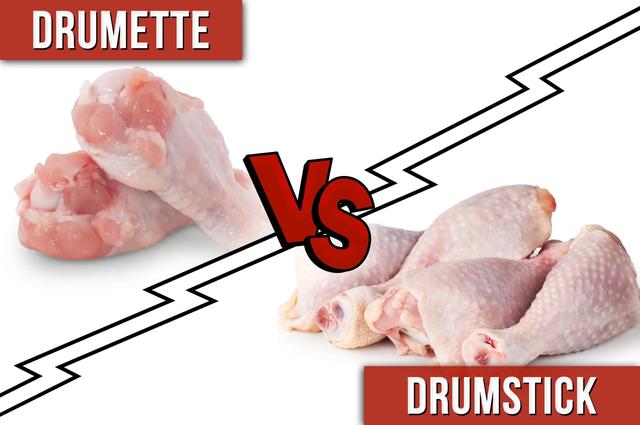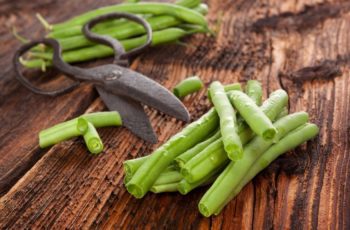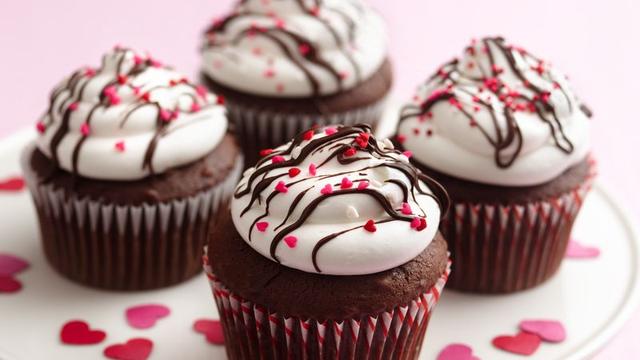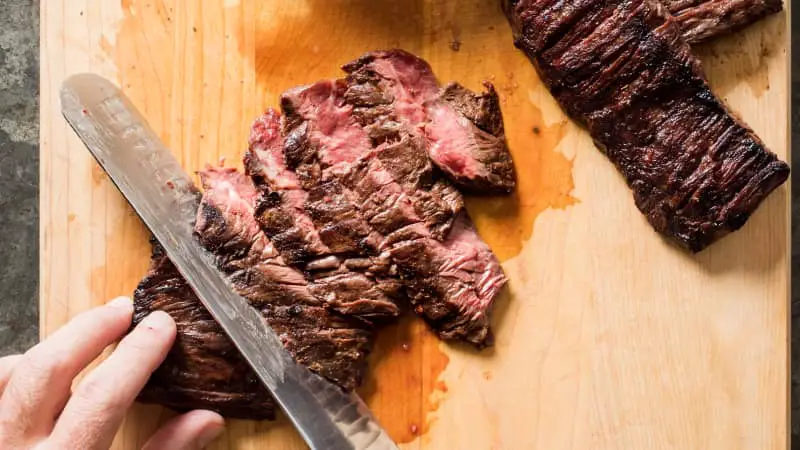
Learn the art of cutting skirt steak with precision and ease. Master the proper techniques and tips for slicing this delicious cut of beef to enhance its tenderness and flavor. Discover expert guidance on how to cut skirt steak like a pro, ensuring your meals are always perfectly prepared and irresistibly tasty.
How to Slice or Cut Skirt Steak: Identify the Grain
Slicing skirt steak can be made easier by identifying and understanding the grain structure of the meat. The grain refers to the direction in which the muscle fibers run within the meat. Before cooking the skirt steak, take note of the way in which the muscle fibers are arranged. This is more easily visible when the meat is raw or uncooked.
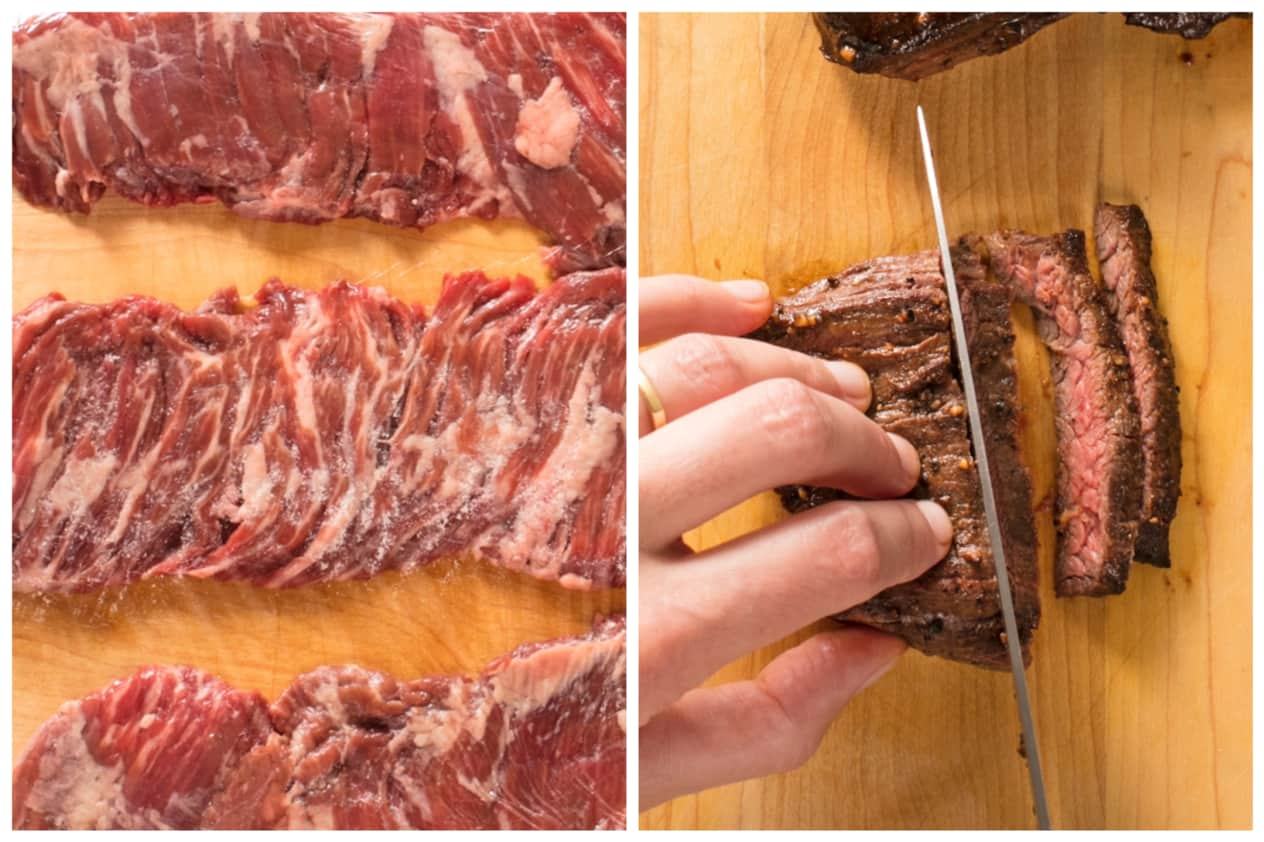
To identify the grain structure, look at how the long strands of muscle fibers form. The grain direction can be seen as a repetitive pattern in which these muscle fibers are aligned. Raw skirt steak provides a clear view of this grain structure.
Once you have identified the grain direction, it is important to slice against it. Slicing perpendicular to the grain effectively shortens the length of muscle fibers, making chewing easier and improving the eating experience. While slicing on a bias (at a 45-degree angle) can further minimize fiber lengths and enhance presentation, slicing perpendicular to the grain is more crucial.
What is Meat “Grain”?
The grain in meat refers to the direction in which the muscle fibers are arranged. Meat muscle is made up of bundles of muscle fibers that are held together by connective tissues. These muscle fibers consist of filaments that are arranged in a repetitive pattern alongside other myofibrils. The direction in which these long strands of muscle fibers form is known as the “grain.”
Similar to the growth pattern of a tree in the wood or lumber industry, the grain structure of meat can be easily identified when the cut is raw or uncooked. Before cooking the meat, it’s important to observe and make note of how the muscle fibers run. This allows for easier identification and slicing against the grain.
Identifying the Grain of Skirt Steak
When it comes to slicing skirt steak, it is important to first identify the grain structure of the meat. The grain refers to the direction in which the muscle fibers run. These muscle fibers are bundled together by connective tissues, and their arrangement forms a repetitive pattern. By understanding and identifying the grain of skirt steak, you can slice it more effectively.
Before cooking the meat, take note of how the muscle fibers run. The easiest way to do this is by observing the raw or uncooked skirt steak. It has a loose texture and clearly shows the direction of the grain. By examining the meat before cooking, you can determine how to slice it against the grain.
To identify the grain structure, look at the skirt steak and notice how the muscle fibers align. You can easily see this by observing a picture or visual representation of a raw skirt steak. The grain direction is typically indicated by a dotted white line.
Is there a Difference Between Inside and Outside Skirt Steak?
While inside and outside skirt steak may have a few differences, the grain direction and the way they are sliced are quite similar. The main difference between these two cuts of meat lies in their location within the animal. Inside skirt steak is found on the inside of the chest wall, close to the diaphragm, while outside skirt steak is located on the outside of the chest wall, closer to the ribs.
Inside skirt steak tends to be thicker and more tender compared to outside skirt steak. It also has a slightly more intense flavor. On the other hand, outside skirt steak is thinner and has a looser texture. It is often preferred for its beefier taste and is commonly used in fajitas or other grilled dishes.
Despite these differences, both inside and outside skirt steak can be sliced in a similar manner by identifying the grain structure and slicing against it. The goal remains the same – to shorten muscle fiber lengths for an easier chewing experience.

How to Cut Skirt Steak Against the Grain
Cutting skirt steak against the grain is important to ensure a tender and easier chewing experience. Here’s how you can do it:
1. Start by examining the skirt steak and identifying the direction of the grain. Look for the long strands of muscle fibers and note which way they run.
2. Whether the meat is raw or cooked, slice it perpendicularly to the grain. If the grain runs vertically, slice horizontally against it. This will effectively shorten the length of the muscle fibers.
3. To further enhance tenderness and presentation, consider slicing on a bias by angling your knife at 45 degrees. However, this step is not as crucial as slicing perpendicular to the grain.
Cutting against the grain helps break up the muscle fibers, making them easier to chew. It reduces toughness and improves texture in each bite of skirt steak.
Why is Skirt Steak Sliced Against the Grain?
Slicing skirt steak against the grain is done to improve the eating experience by making the meat easier to chew. The goal is to shorten the muscle fiber lengths as much as possible. When you slice with the grain, you leave the strands of muscle fibers intact, which can make the meat tougher and more difficult to chew. On the other hand, when you slice against the grain, you effectively shorten the fiber lengths, resulting in a more tender and enjoyable texture.
By slicing skirt steak against the grain, you are able to minimize the force required to bite into and tear apart the meat. Cutting perpendicular to the grain helps to break up and separate the muscle fibers, making it easier for your teeth to navigate through them. This technique has been scientifically tested and proven to enhance tenderness in meat, providing a better overall dining experience.
Are Grill Marks the Same as Meat Grain?
No, grill marks on meat are not the same as meat grain. Grill marks are the result of the maillard reaction, which is a chemical reaction that occurs when amino acids and reducing sugars react at high temperatures. This reaction causes browning and adds flavor to the meat. The presence or absence of grill marks does not indicate the direction of the meat grain.
The grain structure of meat refers to the alignment of muscle fibers within the cut. It is important to identify the grain direction when slicing meat because cutting against the grain shortens the muscle fiber lengths, making it easier to chew. Grill marks can be manipulated in any direction based on how the meat is placed on the grill grates or cooking surface, so they do not provide any information about the grain direction.
In conclusion, cutting skirt steak requires proper technique and knowledge. By following the steps outlined in this guide, you can ensure that your skirt steak is cut correctly for optimal tenderness and flavor. Remember to use a sharp knife, cut against the grain, and let the meat rest before serving. With practice, you’ll be able to master the art of cutting skirt steak like a pro. Enjoy your deliciously prepared skirt steak!
Learn More About Grilling
If you want to learn more about grilling, check out these other helpful resources!


